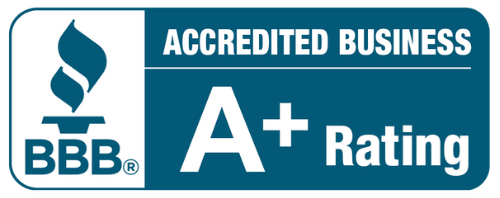Home renovations have enough challenges on their own, but your household pet can complicate things even further. They might not like strangers in the house, the loud noises might bother them, and they’re almost guaranteed to get in the way. Here’s how to keep your pets safe and out of trouble during your home renovation.

1. Crate or Cage Them
No one likes to crate or cage their pets for long periods, but it might be necessary for the sake of your home renovation project. It’s the easiest way to ensure they don’t bother the workers or stick their noses where they don’t belong. Just make sure you give them some sort of entertainment while they wait. Keep the TV on, play music, or give them a new toy.
2. Establish a Containment Room
If you don’t want to confine your pet to a crate or cage, establish a containment room to give them more space. The room should be far away from the renovation project on the other side of the house so the noise doesn’t bother them. Fill the room with toys, bedding, treats, and other comforts to keep your pet occupied.
3. Take Them Outside
Your pet will be fine in the containment room – until they have to go to the bathroom. Take them outside for potty breaks, playtime, walks, and any other excuse you can think of. This advice primarily applies to dogs, but other animals might also benefit from the fresh air. Just make sure you properly leash them!
4. Introduce Them to the Workers
Most pets are indifferent to strangers once they realize you’re comfortable with them, but a whole crew of workers making lots of noise is a different story. You should allow your pet to familiarize themselves with each member of the crew. Let them learn the workers’ scents and voices so they feel less anxious during the project.
The workers will also benefit from meeting your pet. Once they realize it won’t bother them or interfere with the project, they will feel more comfortable and can work with one less distraction.
5. Pet-Proof the Worksite
It’s great if your pet gets along with the crew, but you still need to account for the worksite when the crew leaves. A home renovation worksite has many hazardous materials that can injure or kill animals:
- Paint: Lead-based paint is harmful for any living creature, human or animal. Other non-lead-based paints can also cause mild symptoms like nausea and diarrhea.
- Tools: Any sharp tool lying around could cut or puncture your pet. Make sure the crew stores them properly before they leave each day.
- Chemicals: Cleaning supplies, adhesives, and other chemicals can harm pets in several ways. Skin-to-skin contact might cause burns, inhalation can trigger breathing difficulties, and ingestion can lead to more severe medical issues.
- Plants: Some houseplants are poisonous to animals and can cause serious harm to their digestive systems. If your renovation project includes new plants, make sure they’re non-poisonous.
- Small Items: Your pet could easily swallow nails, screws, wood chips, and other small choking hazards around the worksite. Ask the workers to regularly sweep around the site and pick up these items.
If feasible, you should make the worksite off-limits to your pet and stop them from encountering these hazardous materials in the first place. Set up some indoor pet gates and other obstacles to steer them in another direction.
6. Consider a Pet Service
If your schedule doesn’t allow you to supervise your pet for most of the day, consider hiring a pet service. You can keep them in-house with a pet sitter or dog-walking service, or you could take them away from the worksite to the kennel or a professional daycare.
The best choice depends on your pet’s temperament. You know better than anyone how they react to unfamiliar faces and environments, so choose the option that will make your furry friend the most comfortable.
7. Keep Emergency Resources on Standby
Your protective measures still might not stop your pet from getting into trouble. That’s why you need to keep essential emergency resources on standby in case of an illness or injury. Your veterinarian should be at the top of the list, but these sites might also come in handy:
- ASPCA (Emergency care for your pet): The ASPCA offers guidance and instructions for emergency pet care, including recognizing signs of distress.
- FDA’s Center for Veterinary Medicine: The CVM provides a list of emergency services for particular illnesses and injuries.
- VCA Hospitals: This resource contains a guide on paint and varnish poisoning for dogs and cats.
- PetPlace: PetPlace answers when you should call an emergency vet hotline, clarifying the seriousness of the situation.
Keep Your Pet and Project Safe
Having an animal around a home renovation site is never a good idea, so you’ll have to make some special accommodations once the project begins. Cage them, create a containment room, and take them outside more often to keep them out of trouble. Introduce them to the workers and pet-proof the worksite to reduce the risk of an accident.
Most importantly, remember those emergency resources. They will save precious seconds and help you determine the best course of action if an illness or injury occurs. These efforts will help keep your pet and your project safe.











